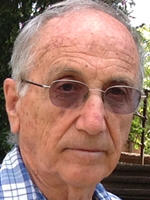Final Award in Quick Composing TT-185 | Окончательные итоги блицконкурса TT-185
Abstention from pinning a white unit | Избегание связки белой фигуры
Theme | Тема
A certain line of play by black or white fails since it entails pinning of a white unit. Therefore, the succeeding solution must be an abstention from this disturbing pinning. A destruction of this pin, which is created in the failed line of play, by means of direct or indirect unpinning is non-thematic. But a destruction of a pin, which already exist in a diagram position, is acceptably – in this case the failed line of play leads to repeated pinning of just unpinning white unit (after her move), that’s why black must refrain from this variant of unpinning.
The failed line of play may appear in one or more of the following ways:
1. Direct or indirect pinning by black.
2. Black move(s) lead to white's self-pin.
3. White move to a pin-line created by a real-solution-move of black.
Zero-positions, fairy pieces and conditions are not allowed.
Определенная линия игры черных или белых не проходит, поскольку приводит к связыванию белой фигуры (пешки), поэтому действительное решение должно включать избегание этого препятствующего мату связывания. Разрушение данной связки, возникшей в непроходящей линии игры, путем прямого или косвенного развязывания нетематично. Но разрушение связки, уже существующей в диаграммной позиции, допустимо – в этом случае непроходящая линия игры приводит к повторному связыванию только что развязанной белой фигуры (после ее хода), поэтому черные должны избежать этого способа развязывания.
Непроходящая линия игры может строиться одним или несколькими из следующих способов:
1. Прямое или косвенное связывание черными.
2. Ход или ходы черных приводят к последующему самосвязыванию белых.
3. Белые играют на линию связки, созданную ходом черных из действительного решения.
Зеро-позиции, а также сказочные фигуры и условия не разрешены.
73 entries were received from 26 authors representing 14 countries | На конкурс поступило 73 композиции от 26 авторов из 14 стран
EN <-> RU
The theme, refraining from pinning of white unit(s) by black or white, brought positive reactions from some colleagues and doubts from others, perhaps due to the unfamiliar notion of pin abstention, distinct from pin avoiding. The former meaning "to refrain from a move or a series of moves that would pin", and the last "to play a move that disturbs the creation of a pin". Anyway, the impressive number of thematically correct candidates proves that the theme was understood and realized in different fashions, as we hoped. Our main interest went to the more complex or surprising realizations. But we did not ignore nice problems whose thematic content is rather simple.
There are some candidates with non-thematic content in one of the phases or even in both, mostly because of simple unpinning moves instead of refraining from pinning moves, and sometimes because the disturbing pinning is meaningless due to some other effect which anyway avoids the use of the pinned unit:
- No 4 (Ka2-Kf4), No 8 (Ke1-Kf7), No 23 (Ke1-Kd4), No 39 (Kh7-Ke4), No 41 (Ka1-Kf8), No 50 (Kg2 Kd4), No 60 (Kd1-Kf4).
Anticipations were found to:
- No 11A (Kf1-Ke6) and No 11B (Kf1-Ke6) – pdb/P1189819;
- No 51 (Kb7-Kd4) – yacpdb/424434;
- No 58 (Kh8-Kd5) – yacpdb/420222;
- No 64 (Ke4-Kf1), after E. Navon (example 4 of the announcement), shows very impressive technical amelioration, but without thematic or other enrichment. It cannot be considered as original.
We warmly thank Aleksey for his great patience and his even so great energy investment ! Thank also to Paz Einat for searching anticipations.
Тема конкурса дала положительные отклики от одних коллег и сомнения – от других, возможно в связи с незнакомым понятием избегания связки. Так или иначе, впечатляющее количество тематических задач, претендовавших на высокие отличия, доказывает, что тема была понята и реализована в различных вариациях, как мы и надеялись. Мы главным образом обращали внимание на более сложные и неожиданные реализации. Но мы не игнорировали и несложные красивые задачи, чье тематическое содержание было довольно простым.
Было несколько задач с нетематическим содержанием в одной или обеих фазах, главным образом из-за наличия простого развязывания вместо избегания связки или из-за того, что мешающее мату связывание не имеет смысла в силу других эффектов, которые в любом случае мешают использованию связанной фигуры. Это задачи No 4 (Ka2-Kf4), No 8 (Ke1-Kf7), No 23 (Ke1-Kd4), No 39 (Kh7-Ke4), No 41 (Ka1-Kf8), No 50 (Kg2 Kd4), No 60 (Kd1-Kf4).
Были найдены предшественники к следующим задачам:
- No 11A (Kf1-Ke6) и No 11B (Kf1-Ke6) – pdb/P1189819;
- No 51 (Kb7-Kd4) – yacpdb/424434;
- No 58 (Kh8-Kd5) – yacpdb/420222;
- No 64 (Ke4-Kf1), по задаче E. Navon (пример 4 из анонса). Очень впечатляющее техническое улучшение, но без тематического или иного обогащения. Это не может считаться оригинальным.
Мы горячо благодарим Алексея за его величайшее терпение и даже за энергию, вложенную во взаимодействие с нами. Также благодарим Паза Эйната за помощь в поиске предшественников.
Award is the following | Отличия распределились следующим образом
1st Prize, 1st Place - No 19
Vitaly Medintsev & Anatoly Skripnik
TT-185, SuperProblem, 06-04-2017 | | |
3q4/rN3n1K/4P1NB/P2pP3/3k4/2p5/p1rp3n/1bb2B2 |
| h#2vv | 3.1.. | (8+12) |
|
2nd-3rd Pr., 2nd-3rd Pl. - No 13
Vitaly Medintsev & Anatoly Skripnik
TT-185, SuperProblem, 06-04-2017 | | |
1NNKBB2/1qP4r/1n1P2r1/3k1Pp1/4p3/b2n4/8/8 |
| h#2 | 2.1.. | (8+9) |
|
2nd-3rd Pr., 2nd-3rd Pl. - No 12
Vitaly Medintsev & Anatoly Skripnik
TT-185, SuperProblem, 06-04-2017 | | |
8/rp6/N1k5/7p/1p6/N7/n7/Kn3BBr |
| h#2 | 2.1.. | (5+8) |
|
1st Prize, 1st Place - No 19, Vitaly Medintsev & Anatoly Skripnik (Russia) 3q4/rN3n1K/4P1NB/P2pP3/3k4/2p5/p1rp3n/1bb2B2
Phase A: 1.Qh4 Sc5 2.Qe4 Sb3#
1...Bf8?? 2.Qe4 Bc5#?? – failed phase C
1...Se7? 2.Qe4+ Sc6#?? – failed phase B
Phase B: 1.Sd6 Se7 2.Se4 Sc6#
1...Sc5?? 2.Se4 Sb3#?? – failed phase A
1...Bf8? 2.Se4 Bc5#?? 3.Sxc5! – failed phase C
Phase C: 1.Rb2 Bf8 2.Be4 Bc5#
1...Se7?? 2.Be4 Sc6#?? – failed phase B
1...Sc5? 2.Be4 Sb3#?? 3.Rxb3! – failed phase A
Each of the three B1 moves pins "accidentally” one of the three white units prepared to mate on c5, b3, c6. Thus, the implementation of this or that mate needs a B1 move that refrains from this pinning. Dual avoiding between the two mates that remain seemingly possible after each B1 move is provided by secondary effects of B1 or B2. Thus, appears a cyclic pattern ACB/BAC/CBA.
A nice trait is the mating pattern where control of a flight square is lost by W1 and retrieved by the same unit at W2. True, the phases are not thoroughly reflecting, or copying, each other. We hope that the faithful of perfect "harmony” will forgive. Anyway, in our eyes this problem realizes brilliantly the proposed theme, and merits, without hesitation the highest ranking…
Каждый из трех решающих вступительных ходов черных «случайно» связывает одну из белых фигур, готовящуюся объявить мат на c5, b3, c6. Таким образом, реализация того или иного мата требует, чтобы на первом ходу черные избежали соответствующего связывания. В антидуалях два других мата, которые кажутся возможными после первого хода черных, на самом деле не проходят из-за вторичных эффектов первого или второго ходов черных. Таким образом, возникает цикл ACB/BAC/CBA.
Хорошо, что в матовой схеме каждая из белых фигур первым ходом снимает контроль с поля около черного короля и затем вновь берет это поле под контроль на матующем ходу. Правда, фазы не полностью отражают (повторяют) друг друга. Мы надеемся, что сторонники совершенной «гармонии» простят это. В любом случае, на наш взгляд, эта задача блистательно демонстрирует заявленную тему и по существу безоговорочно занимает первое место.
EN <-> RU
2nd-3rd Prize, 2nd-3rd Place - No 13, Vitaly Medintsev & Anatoly Skripnik (Russia) 1NNKBB2/1qP4r/1n1P2r1/3k1Pp1/4p3/b2n4/8/8
1.Qc6 (Qa8?) Sxc6 (Bg7?) 2.Sc5 (Bc5?) Sxb6#
1.Rgg7 (Rg8?) Bxg7 (Sc6?) 2.Bc5 (Sc5?) Bf7#
In B1 the search for a hideaway for Qb7 or Rg6 must refrain from landing on a8 or g8 which would create a white half-pin, and a pin after W1. The sound landing brings the Queen or the Rook on the very landing square of W1 where it will got hit. This trait subtly imposes the right order of black's moves. The special interest of this problem is the almost dual creation of a white half-pin out of the blue, a trait that does not appear in anyone of the other candidates.
Первым ходом черные, выполняя хайдэвэй для Qb7 или Rg6, должны избежать хода на а8 или g8 соответственно, ибо он приведет к полусвязке, которая станет связкой после ответного хода белых. Верным ходом является ход на поле, где черный ферзь или ладья будут съедены. Эта едва уловимая тонкость обуславливает порядок ходов черных. Особый интерес в этой задаче представляет то, что белая полусвязка возникает внезапно, из ниоткуда – такого нет больше ни в одной другой присланной задаче.
EN <-> RU
2nd-3rd Prize, 2nd-3rd Place - No 12, Vitaly Medintsev & Anatoly Skripnik (Russia) 8/rp6/N1k5/7p/1p6/N7/n7/Kn3BBr
1.Sac3 Bc5 2.S(a)d5 Bb5# (1...Sb5? 2.S(a)d5 Sb8#??)
1.Sbc3 Sb5 2.S(b)d5 Sb8# (1...Bc5? 2.S(b)d5 Bb5#??)
In this elegant composition the thematic motive appears after B1 clearing a potential white half-pin line, unlike the precedent where B1 must refrain from creating such a line. After this clearing move white must abstain from mobilizing one of its now half-pinned units, leaving its colleague pinned and unable to mate.
A weakness of this composition is the total symmetry of black's position. Luckily whites one is not.
В этой элегантной композиции тематические мотивы возникают после первого хода черных, приводящего к полусвязке – в отличие от предыдущей задачи, где это вело лишь к ложной линии игры. После этого первого хода черных, белые должны избежать того, чтобы эта полусвязка превратилась в связку, ибо тогда мат будет невозможен.
Недостаток этой задачи – полная симметрия позиции черных. К счастью, этого удалось избежать в позиции белых.
EN <-> RU
4th-5th Prize - No 59
Menachem Witztum
TT-185, SuperProblem, 06-04-2017 | | |
8/2pp4/8/1P4RK/p4p2/pbP2Rp1/qpP4p/brr4k |
| h#2 | b) Kh1->d8 | (6+14) |
|
4th-5th Prize - No 56
Menachem Witztum
TT-185, SuperProblem, 06-04-2017 | | |
R4Bqr/K3p3/1p6/8/n6r/k2n1R2/pp4b1/8 |
| h#2 | 2.1.. | (4+11) |
|
6th Prize - No 17
Vitaly Medintsev & Anatoly Skripnik
TT-185, SuperProblem, 06-04-2017 | | |
3R1r2/8/bpB2r1p/qp2B3/1b2K3/8/p3k3/8 |
| h#2 | b) Ke2->e1 | (4+10) |
|
4th-5th Prize - No 59, Menachem Witztum (Israel) 8/2pp4/8/1P4RK/p4p2/pbP2Rp1/qpP4p/brr4k
a) diagram: 1.Rxc2 Rgxg3 2.Rf1 Rxf1# (1.Bxc2? Rgxg3 2.Bd1 Rf1#??)
b) Kh1->d8: 1.Bxc2 Re3 2.Qg8 Rxg8# (1.Rd1? Re3 2.Rd5 Rg8#??)
Each of the two mating-squares (f1, g8) are under fire of two black units placed on the same line (Bb3+Qa2 and Rc1+Rb1). Tries to obstruct the double line by using one of the units of the other fail neatly at B2 through pinning of the mating unit. The succeeding solutions move away one of the disturbing units and sacrifices the other. Nice reciprocity in the working of the two disturbing sets and good inversion of functions between the white rooks. A very surprising and original approach of the theme.
Каждое из двух матовых полей (f1, g8) – под двойным огнем сдвоенных на одной линии черных фигур (Bb3+Qa2 и Rb1+Rc1). Попытка перекрыть одну из этих линий ходом фигуры из другой пары не проходит из-за того, что перекрывающая фигура на втором ходу связывает белую, которая должна матовать. Успешным становится другой способ – уход одной из фигур с линии и жертва другой. Красивое взаимодействие в работе двух мешающих мату наборов фигур и хорошая перемена функций белых ладей. Очень неожиданный и оригинальный подход к выполнению темы.
EN <-> RU
4th-5th Prize - No 56, Menachem Witztum (Israel) R4Bqr/K3p3/1p6/8/n6r/k2n1R2/pp4b1/8
1.Rb4 Kb8 (Kb7?) 2.e6 Rxd3#
1.Qb3 Kb7 (Kb8?) 2.Sf4 Bxe7#
Only a pinch of the candidates realize the theme with pin mates. This one does it even with double pin-mates. This trait secures it special merit even with simple thematic content. WK clears the pin line of Ra8 to Sa4 and must refrain from entering disturbing pin lines on b8, b7.
Лишь в небольшом количестве задач реализация темы содержит маты со связкой. В этой задаче – даже сразу с двумя связками. Эта особенность добавляет задаче определенных достоинств даже при простом тематическом содержании. Белый король освобождает линию связки ладьей коня а4 и при выборе Kb8/Kb7 должен избежать возникновения связки белой матующей фигуры.
EN <-> RU
6th Prize - No 17, Vitaly Medintsev & Anatoly Skripnik (Russia) 3R1r2/8/bpB2r1p/qp2B3/1b2K3/8/p3k3/8
a) diagram: 1.Bc8 (Bb7?) Bg3 (A) 2.Qa7 (Qa8?) Bxb5# (B)
b) Ke2->e1: 1.Rh8 (Re8?) Bxb5 (B) 2.Rc6 (Re6?) Bg3# (B)
The couples Ba6+Qa5 and Rf8+Rf6 must hideway (each one, in separates solutions). Each couple has failed hidings, 1.Bb7? 2.Qa8? and 1.Re8? 2.Re6?. Thus, the theme is doubled in each phase. Another surprising approach!
Пары фигур Ba6+Qa5 и Rf8+Rf6 должны выполнить хайдэвэй (попарно, в разных решениях). Игра каждой пары содержит неудачную попытку хайдэвэя – 1.Bb7?, 2.Qa8? и 1.Re8?, 2.Re6?
Таким образом, тем удвоена в каждой фазе. Еще один неожиданный подход!
EN <-> RU
1st Honorable mention - No 62
Menachem Witztum
TT-185, SuperProblem, 06-04-2017 | | |
6B1/4KN2/p2p4/3Pb3/3k2p1/1Pnnp3/1Pq5/8 |
| h#2 | b) Pb2->e2 | (6+9) |
|
2nd Honorable mention - No 7
Ivars Ozols
TT-185, SuperProblem, 06-04-2017 | | |
1K3Qr1/1nn3p1/8/8/1p3p2/8/2kP3b/1r3q2 |
| h#2 | b) Kc2->e2 | (3+10) |
|
3rd Honorable mention - No 55
Ricardo Vieira
TT-185, SuperProblem, 06-04-2017 | | |
2B5/1p4p1/6p1/1KP1N2r/n3k3/bN2n1B1/1P6/1q6 |
| h#2 | b) Ke4<->Se3 | (7+9) |
|
1st Honorable mention - No 62, Menachem Witztum (Israel) 6B1/4KN2/p2p4/3Pb3/3k2p1/1Pnnp3/1Pq5/8
a) diagram: 1.Se4 Sh6 (Sxd6?) 2.Qc5 Sf5#
b) Pb2->e2: 1.Sc5 Sd8 (Sxe5?) 2.Qe4 Sc6#
In both phases the white S, on his way to a mating square not controlled by the black Q after B1, must already choose between two routes, one of which would later leave it pinned with B2. The pattern a black Q behind black knights looks familiar, but no anticipation was found.
В обеих фазах белый конь по пути к тому матовому полю, которое НЕ берет под контроль черный ферзь после первого хода черных, должен выбрать между двумя маршрутами, один из которых впоследствии приведет к его связыванию. Схема с черным ферзем, стоящим позади своих коней, выглядит известной, но предшественников найдено не было.
EN <-> RU
2nd Honorable mention - No 7, Ivars Ozols (Latvia) 1K3Qr1/1nn3p1/8/8/1p3p2/8/2kP3b/1r3q2
a) diagram: 1.Se8 (Sd8?) Qxb4 2.Qd1 Qc3#
b) Kc2->e2: 1.Sd8 (Se8?) Qxf4 2.Rd1 Qe3#
An interesting pin refraining device by black. According to the intended mate determined by the twinning position, the black unpinning S at B1 must be carefully chosen since the wrong one would clear a potential pin line on which the Q would pin herself at W1. Ideally the Bh2 should have a role analogue to that of Qf1. Such a dream performance would have granted a higher rank.
Интересное избегание связки, выполняемое черными. Для достижения мата, обуславливаемого позицией черного короля в близнецах, выполнить развязывание должен «правильный» черный конь, т. к. «неправильный» откроет потенциальную линию связки, на которую затем ступит белый ферзь. В идеале Bh2 должен играть ту же роль, что и Qf1 – это подняло бы задачу выше.
EN <-> RU
3rd Honorable mention - No 55, Ricardo Vieira (Brazil) 2B5/1p4p1/6p1/1KP1N2r/n3k3/bN2n1B1/1P6/1q6
a) diagram: 1.Bxc5! (B) (Bxb2? (A)) Be6 2.Bd4 Sd2#
b) Ke4<->Se3: 1.Sxb2! (A) (Sxc5? (B)) Bg4 2.Sd3 Sc4#
There are two white half-pin lines; Black has two routes to block a flight but must abstain from one of them, since, on his way he would hack out a white pawn of a half-pin line an leave the mating unit pinned. The role inversion of the white S is astutely achieved through the twinning mechanism, changing the color of the black Kings standing square which determines which black unit will play at B1 and B2. But, in fact, this twinning can be avoided by putting wSe5 on f5 and some other changes.
Здесь две линии полусвязки; черные фигуры имеют на выбор два маршрута для блокирования поля, но должны избежать маршрута со взятием пешки, т. к. в этом случае матующая белая фигура окажется связанной. Перемена функций белых коней достигнута за счет механизма близнецов с переменой цвета поля черного короля, определяющего, какая черная фигура будет блокировать ему поле. Но на самом деле такого способа образования близнеца можно избежать перестановкой Se5->f5 и рядом других изменений.
EN <-> RU
4th Honorable mention - No 48
Aleksandr Kostyukov
TT-185, SuperProblem, 06-04-2017 | | |
3r3b/3k4/1n1P4/3pr1p1/n2K1PPq/1PRBP3/p2p2pp/8 |
| h#2 | b-d)Kd7->a3,b4,h3 | (8+13) |
|
5th Honorable mention - No 40
Ivo Tominić
TT-185, SuperProblem, 06-04-2017 | | |
8/7P/1P3P2/3p4/2k2KBP/6Qq/6p1/6B1 |
| h#2 | 2.1.. | (8+4) |
|
6th Honorable mention - No 29
Francesco Simoni
TT-185, SuperProblem, 06-04-2017 | | |
K7/8/8/3N4/Q7/3kp2q/P6p/r1n5 |
| h#2 | 2.1.. | (4+6) |
|
4th Honorable mention - No 48, Aleksandr Kostyukov (Russia) 3r3b/3k4/1n1P4/3pr1p1/n2K1PPq/1PRBP3/p2p2pp/8
a) diagram: 1.Qh6 (Qxg4?) fxe5 2.Qe6 Bb5#
b) Kd7->a3: 1.d1B (d1Q?) Bc4 2.Bxb3 Rxb3#
c) Kd7->b4: 1.a1R (a1Q?) Rc5 2.Ra3 Rb5#
d) Kd7->h3: 1.g1R (g1Q?) e4 2.Rxg4 Bf1#
Task of fourfold implementation of the theme, with simple effects. Phase A looks somewhat out of context; that is often the price of task achievements.
Таск: 4-кратное воплощение темы с простыми эффектами. Фаза а) выглядит выпадающей из общего содержания; зачастую это цена за рекордное достижение.
EN <-> RU
5th Honorable mention - No 40, Ivo Tominić (Croatia) 8/7P/1P3P2/3p4/2k2KBP/6Qq/6p1/6B1
1.Qh2 (Qxh4?) Bd1 2.Qh2-h1 Qb3#
1.Qxh4 (Qh2?) Qa3 2.Qh4-h1 Be2#
A subtle tempo play. The black Q must win a tempo and paradoxically does this just with moves that pin one of the 2 mating units. Beginning with 1.Qh1 would pin the mating unit at W2. It is a pity that B2 moves are both to h1 in both solutions.
This can be avoided so: 8/4p3/1P6/3p4/2k2KBP/6Qq/6pP/6B1, 2.1..; 1.Qh2 (Qxh4? e6?) Bd1 2.Qh1 Qb3#, 1.Qxh4 (Qh2? e6?) Qa3 2.Qh8 Be2#.
Тонкая темпо-игра. Черный ферзь должен выиграть темп и парадоксально может сделать это только ходами, связывающими одну из белых матующих фигур. Попытка же 1.Qh1? приведет к тому, что ферзь вынужден будет связать белую фигуру ходом позже.
Жаль, что второй ход обоих решений выполняется на одно и то же поле. Этого можно избежать так: 8/4p3/1P6/3p4/2k2KBP/6Qq/6pP/6B1, 2.1..; 1.Qh2 (Qxh4? e6?) Bd1 2.Qh1 Qb3#, 1.Qxh4 (Qh2? e6?) Qa3 2.Qh8 Be2#.
EN <-> RU
6th Honorable mention - No 29, Francesco Simoni (Italy) K7/8/8/3N4/Q7/3kp2q/P6p/r1n5
1.Rxa2 (Qg2?) Sb6 (Qb4??) 2.Rd2 Qc4#
1.Qg2 (Rxa2?) Qb4 (Sb6??) 2.Qc2 Sf4#
At first sight non thematic: in both solutions black pins and unpins one of the mating units. Solution of this riddle: if at B1 black thinks of preparing Qc4# he must refrain from 1.Qg2 which pins the white S supposed to play W1. If he thinks of preparing Sf4# he must refrain from B1 R:a2 which pins the Q supposed to play at W1.
На первый взгляд, задача нетематична: в обоих решениях черные связывают и развязывают одну из матующих фигур. Решение этой загадки:
- если на первом ходу черные думают о подготовке Qc4#, то они должны избежать хода 1.Qg2 со связыванием коня, который должен сыграть сразу;
- если на первом ходу черные думают о подготовке Sf4#, то они должны избежать хода 1.Rxa2 со связыванием ферзя, который должен сыграть сразу.
EN <-> RU
7th Honorable mention - No 33
Rolf Wiehagen & Christer Jonsson
TT-185, SuperProblem, 06-04-2017 | | |
3b4/r1kp4/p7/2p5/4K3/1P1ppp2/4Q1b1/1q2r3 |
| h#2 | 3.1.. | (3+12) |
|
1st Commendation - No 21
Fadil Abdurahmanovic
TT-185, SuperProblem, 06-04-2017 | | |
8/3p4/2pk2p1/r3p3/2Kb1p2/3n1Nrp/4p1bQ/3R3n |
| h#2 | 2.1.. | (4+14) |
|
2nd Commendation - No 27
Rodolfo Riva
TT-185, SuperProblem, 06-04-2017 | | |
8/K2pp2r/1n1pN3/2pNk3/5R2/8/8/6b1 |
| h#2 | 2.1.. | (4+8) |
|
7th Honorable mention - No 33, Rolf Wiehagen (Germany) & Christer Jonsson (Sweden) 3b4/r1kp4/p7/2p5/4K3/1P1ppp2/4Q1b1/1q2r3
1.Kb6 Qc2 (Qxe3?) 2.Ka5 Qxc5#
1.Kc6 Qa2 (Qxd3?) 2.Rc7 Qxa6#
1.Kd6 Qb2 (Qxf3?) 2.Bc7 Qf6#
Kind of task, with WQ abstaining three times of directly pinning herself at W1 on one of three black lines. Simple device, but good construction.
It is possible to activate the three passive black units creating the three dual possibilities and to have them integrated in the real play:
8/r2B2p1/2p2k2/5p2/p2K3n/2ppp3/3Q1b2/q2r4, b) Sh4->f8, c) Kf6->b7; a) diagram: 1.Rg1 Qa2 (Qxe3?) 2.Rg5 Qe6#; b) Sh4->f8: 1.Qa3 Qxf2 (Qxd3?) 2.Qe7 Qxf5#;
c) Kf6->b7: 1.Bg3 Qg2 (Qxc3?) 2.Bb8 Qxc6#
Таск, в котором белый ферзь трижды избегает связки по одной из трех черных линий. Простой замысел, но хорошая конструкция.
Есть возможность активировать три пассивные черные фигуры путем создания ими трех ложных линий игры для вовлечения этих фигур в решение:
8/r2B2p1/2p2k2/5p2/p2K3n/2ppp3/3Q1b2/q2r4, b) Sh4->f8, c) Kf6->b7; a) diagram: 1.Rg1 Qa2 (Qxe3?) 2.Rg5 Qe6#; b) Sh4->f8: 1.Qa3 Qxf2 (Qxd3?) 2.Qe7 Qxf5#;
c) Kf6->b7: 1.Bg3 Qg2 (Qxc3?) 2.Bb8 Qxc6#
EN <-> RU
1st Commendation - No 21, Fadil Abdurahmanovic (Bosnia & Herzegovina) 8/3p4/2pk2p1/r3p3/2Kb1p2/3n1Nrp/4p1bQ/3R3n
1.Bf1 Qxe2 2.Bc5 (Sc5?) Qe2-e5#
1.Rg4 Qxf4 2.Sc5 (Bc5?) Qf4-e5#
A fine realization of the theme, with no evident pin lines, but the mates on the same square by the same white unit spoil. But for this the problem would have been higher ranked.
Чудесная реализация темы, без очевидных линий связок, но маты на одном поле одной и той же фигурой портят задачу. Без этого недостатка задача могла встать выше.
EN <-> RU
2nd Commendation - No 27, Rodolfo Riva (Italy) 8/K2pp2r/1n1pN3/2pNk3/5R2/8/8/6b1
1.Sxd5 Sf8 2.e6 Sg6# (1...Sxc5? 2.e6 Sd3#??)
1.dxe6 Sb4 2.Sd5 Sd3# (1...Sxe7? 2.Sd5 Sg6#??)
Abstaining from newly created pin-lines with Zilahi.
Избегание вновь создаваемой связки в сочетании с Зилахи.
EN <-> RU
3rd-6th Commendation - No 53
Ingemar Lind
TT-185, SuperProblem, 06-04-2017 | | |
8/1KP5/5p1q/5k1p/5p1p/4R2P/8/8 |
| h#2 | 2.1.. | (4+6) |
|
3rd-6th Commendation - No 25
Rodolfo Riva
TT-185, SuperProblem, 06-04-2017 | | |
b7/4p3/2n1k2p/4P3/r3B1n1/4N1KP/1r5B/8 |
| h#2 | 2.1.. | (6+8) |
|
3rd-6th Commendation - No 63
Menachem Witztum
TT-185, SuperProblem, 06-04-2017 | | |
rnK5/p1b1p1R1/N4k1P/2n5/6P1/8/8/2r5 |
| h#2 | 2.1.. | (5+8) |
|
3rd-6th Commendation - No 53, Ingemar Lind (Sweden) 8/1KP5/5p1q/5k1p/5p1p/4R2P/8/8
1.Qg5 (Qh7?) c8R 2.Qg6 Rc5# (1...c8S? 2.?? Se7#)
1.Qg6 (Qg7?) c8S 2.Qg5 Se7# (1...c8R? 2.?? Rc5#)
3rd-6th Commendation - No 25, Rodolfo Riva (Italy) b7/4p3/2n1k2p/4P3/r3B1n1/4N1KP/1r5B/8
1.Sf6 Kf3 (Kh4?) 2.Sd7 Bd5#
1.Sd8 Kh4 (Kf3?) 2.Sf7 Bf5#
3rd-6th Commendation - No 63, Menachem Witztum (Israel) rnK5/p1b1p1R1/N4k1P/2n5/6P1/8/8/2r5
1.Be5 Sc7 2.e6 Se8# (1...Sxc5? 2.e6 Se4#??)
1.e5 Sb4 2.Se6 Sd5# (1...Sxc7? 2.Se6 Se8#??)
3rd-6th Commendation - No 36
Rolf Wiehagen & Christer Jonsson
TT-185, SuperProblem, 06-04-2017 | | |
K7/3R4/p1k1N3/P1pp4/pp1p4/2N5/8/7b |
| h#2 | 2.1.. | (5+8) |
|
Special Commendation - No 1
Dieter Müller
TT-185, SuperProblem, 06-04-2017 | | |
7n/2r1p2K/2B1r3/3Np3/1PRNk2p/n1p5/2p1P3/1b6 |
| h#2 | b) Pb4->c5 | (7+11) |
|
Special Commendation - No 52
Ingemar Lind
TT-185, SuperProblem, 06-04-2017 | | |
7k/7p/1B6/1K3RP1/8/8/6q1/8 |
| h#2 | 2.1.. | (4+3) |
|
3rd-6th Commendation - No 36, Rolf Wiehagen (Germany) & Christer Jonsson (Sweden) K7/3R4/p1k1N3/P1pp4/pp1p4/2N5/8/7b
1.Kxd7 Sxa4 (Sxd5?) 2.Kc8 Sb6#
1.dxc3 Rc7+ (Rxd5?) 2.Kb5 Rxc5#
Special Commendation - No 1, Dieter Müller (Germany) 7n/2r1p2K/2B1r3/3Np3/1PRNk2p/n1p5/2p1P3/1b6
a) diagram: 1.Sxc4 Se3+ (A) (Sxe7+?) 2.Kxd4 Sf5# (B)
b) Pb4->c5: 1.Rcxc6 Sf5+ (B) (Sxc2+?) 2.Kxd5 Se3# (A)
This basic white pattern has been use in many problems (for example,
yacpdb/366814), but a full anticipation using it with pin abstention could not be found.
Базовая схема белых фигур была использована во многих задачах (например,
yacpdb/366814), но полного предшественника с избеганием связки мы не нашли
Special Commendation - No 52, Ingemar Lind (Sweden) 7k/7p/1B6/1K3RP1/8/8/6q1/8
1.Qa2 (Qxg5?) Rf8+ 2.Qg8 Bd4#
1.Qxg5 (Qb7?) Bd4+ 2.Qg7 Rf8#
This pattern has been used many times (for example,
pdb/P0570282), but never, as far as we know, with pin abstention.
Схема встречалась много раз (например,
pdb/P0570282), но ни разу – с избеганием связки, насколько нам известно.
 (in the lower right corner of the input field) and select a needed graphic file on your computer.
(in the lower right corner of the input field) and select a needed graphic file on your computer. and enter your e-mail. Visitors who use rss-aggregators can subscribe to rss-feed for this widget by clicking on the icon
and enter your e-mail. Visitors who use rss-aggregators can subscribe to rss-feed for this widget by clicking on the icon 
 Vitaly Medintsev
Vitaly Medintsev Anatoly Skripnik
Anatoly Skripnik Emanuel Navon
Emanuel Navon Jean Haymann
Jean Haymann

